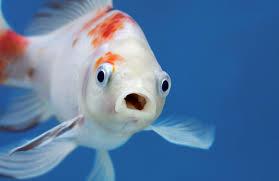

Popeye disease, also known as exophthalmia, is a common ailment that affects aquarium fish, causing their eyes to bulge or protrude from their sockets. While not a disease in itself, Popeye is often a symptom of an underlying health issue that requires prompt attention. In this article, we explore the causes, symptoms, and treatment options for Popeye disease in aquarium fish to help aquarists effectively manage and prevent this condition.
Understanding Popeye Disease
Popeye disease manifests as the swelling or protrusion of one or both eyes in aquarium fish. It can affect a variety of fish species, including freshwater and marine fish, and is typically indicative of an underlying health issue rather than a specific disease. Popeye may occur suddenly or develop gradually over time, depending on the underlying cause.
Causes of Popeye Disease
Several factors can contribute to the development of Popeye disease in aquarium fish:
Bacterial Infections: Bacterial infections, such as those caused by Aeromonas, Pseudomonas, or Flavobacterium species, are common culprits behind Popeye disease. These infections may enter the fish's system through open wounds, poor water quality, or stressors that weaken their immune system.
Parasitic Infections: Certain parasitic infections, including those caused by protozoans like Hexamita or external parasites like flukes, can lead to inflammation and swelling of the eyes.
Physical Trauma: Injuries or trauma to the eye region, either from aggression among tank mates, collisions with tank décor, or improper handling during netting or transport, can result in Popeye disease.
Environmental Stressors: Poor water quality, inadequate tank maintenance, fluctuating water parameters, overcrowding, or incompatible tank mates can stress fish and make them more susceptible to Popeye disease.
Symptoms of Popeye Disease
Identifying the symptoms of Popeye disease is crucial for early intervention and treatment:
Bulging or Protruding Eyes: The most apparent sign of Popeye disease is the swelling or protrusion of one or both eyes beyond their normal position.
Cloudy or Discolored Eyes: Affected eyes may appear cloudy, opaque, or discolored due to inflammation, infection, or damage.
Behavioral Changes: Fish with Popeye disease may exhibit changes in behavior, such as reduced activity, loss of appetite, or increased hiding.
Secondary Symptoms: In severe cases, Popeye disease may be accompanied by other symptoms, such as fin rot, lesions, or abnormal growths, depending on the underlying cause.
Treatment Options for Popeye Disease Treating Popeye disease involves addressing the underlying cause and providing supportive care to affected fish:
Isolate Affected Fish: If possible, move fish displaying symptoms of Popeye disease to a separate quarantine tank to prevent the spread of infection and facilitate treatment.
Water Quality Management: Improve water quality by performing partial water changes, vacuuming the substrate, and optimizing filtration to reduce stress and minimize the risk of secondary infections.
Medication: Depending on the underlying cause, treatment may involve administering broad-spectrum antibiotics to combat bacterial infections or antiparasitic medications to address parasitic infestations. Follow dosage instructions carefully and complete the full course of treatment.
Stress Reduction: Minimize stressors in the aquarium environment by providing adequate hiding places, maintaining stable water parameters, and avoiding overcrowding or aggressive tank mates.
Nutritional Support: Offer a varied and nutritious diet to boost the immune system and support the overall health of affected fish. High-quality foods rich in vitamins and minerals can aid in recovery.
Preventing Popeye Disease Preventing Popeye disease requires proactive measures to maintain a healthy aquarium environment:
Regular Maintenance: Perform routine water changes, test water parameters, and clean aquarium equipment regularly to ensure optimal water quality.
Quarantine New Additions: Quarantine new fish and plants before introducing them to the main aquarium to prevent the introduction of pathogens or parasites.
Provide Adequate Space: Avoid overcrowding and provide ample swimming space and hiding spots to reduce stress and aggression among tank mates.
Handle Fish Carefully: Use caution when handling fish to minimize the risk of injury or trauma that could lead to Popeye disease.
Leave a Reply
Related Products
You Might Like Also

Fishing, a timeless pursuit that transcends cultures and generations, encompasses a myriad of techniques tailored to the unique characteristics of each aquatic environment. From tranquil freshwater streams to the vast expanse of the open ocean, anglers employ an array of methods honed through centuries of tradition and innovation. Read More













